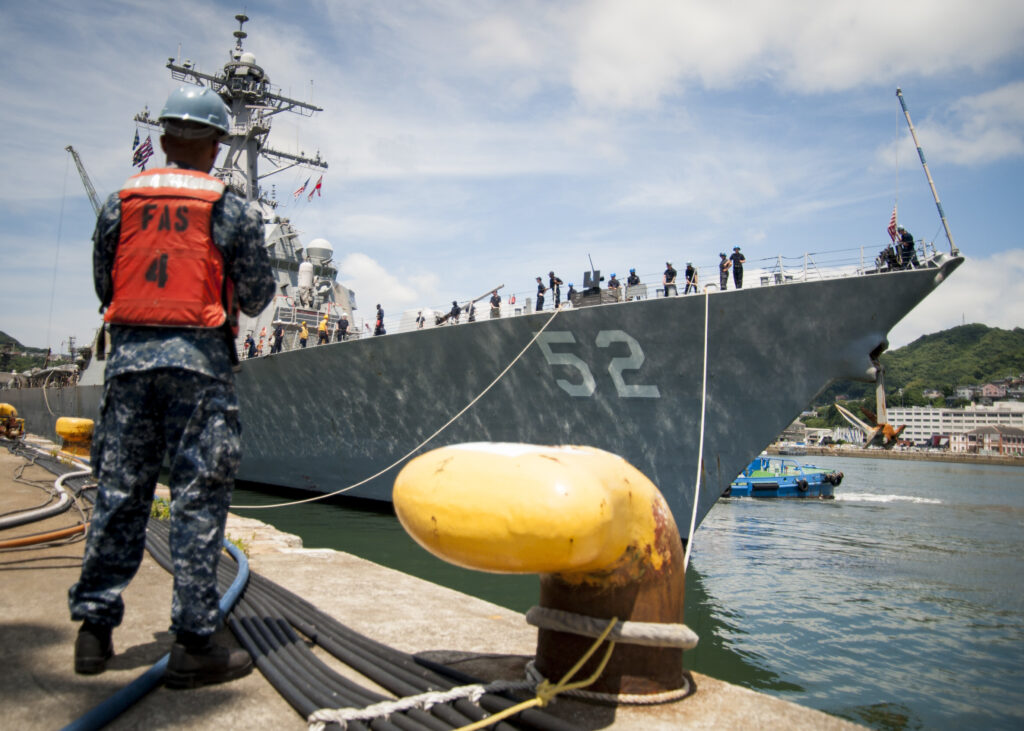
ARLINGTON, Va. — Lockheed Martin is continuing to upgrade primary radars on a number of the U.S. Navy’s guided-missile destroyers (DDGs), a company official said. Older SPY-1 versions are being modified with digital Low Noise Amplifiers, or LNAs, which can improve their sensitivity and thereby improve the accuracy, range and discrimination of the radar.
“How do you develop a low-cost, high-payoff solution to keep SPY-1 relevant as the threat evolves?” Jon Rambeau, Lockheed Martin’s vice president and general manager for Integrated Warfare Systems and Sensors, asked rhetorically in an interview with Seapower, pointing to the LNA as a step in that direction.
The SPY-1 radar is the primary sensor of the Aegis Combat System on the U.S. Navy’s Ticonderoga-class cruisers and Flight I, II and IIA Arleigh Burke DDGs and is used to detect and track aircraft, cruise missiles and ballistic missiles.
The LNA is part of the upgrade of the 21 Flight I and II DDGs to enable a “full BMD [ballistic missile-defense] capability in accordance with the 2030 Missile Defense Review,” Rambeau said.
He said Lockheed Martin is under contract for upgrading nine SPY-1 arrays under funding provided by the Navy and the Missile Defense Agency. The arrays are being tested and made ready for installation of the DDGs.
Rambeau there was “some discussion around the Navy’s future plans for those 21 ships and that’s something we’re watching very carefully.”
He said the LNA upgrade may be something the company thinks can be relevant for international customers as well.
- SECNAV Advocates Increased Legal Immigration to Increase Shipbuilder Workforce - April 23, 2024
- Insitu Going Strong at 30, Focusing on Maritime Operations - April 8, 2024
- Navy Awards Boeing Additional Funds for MQ-25 Drones for Testing - April 3, 2024






